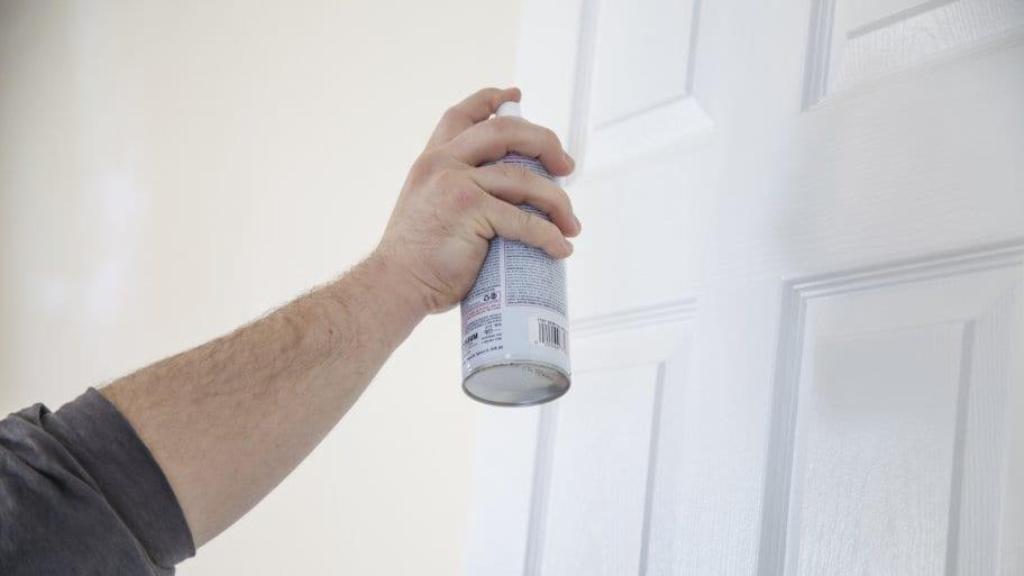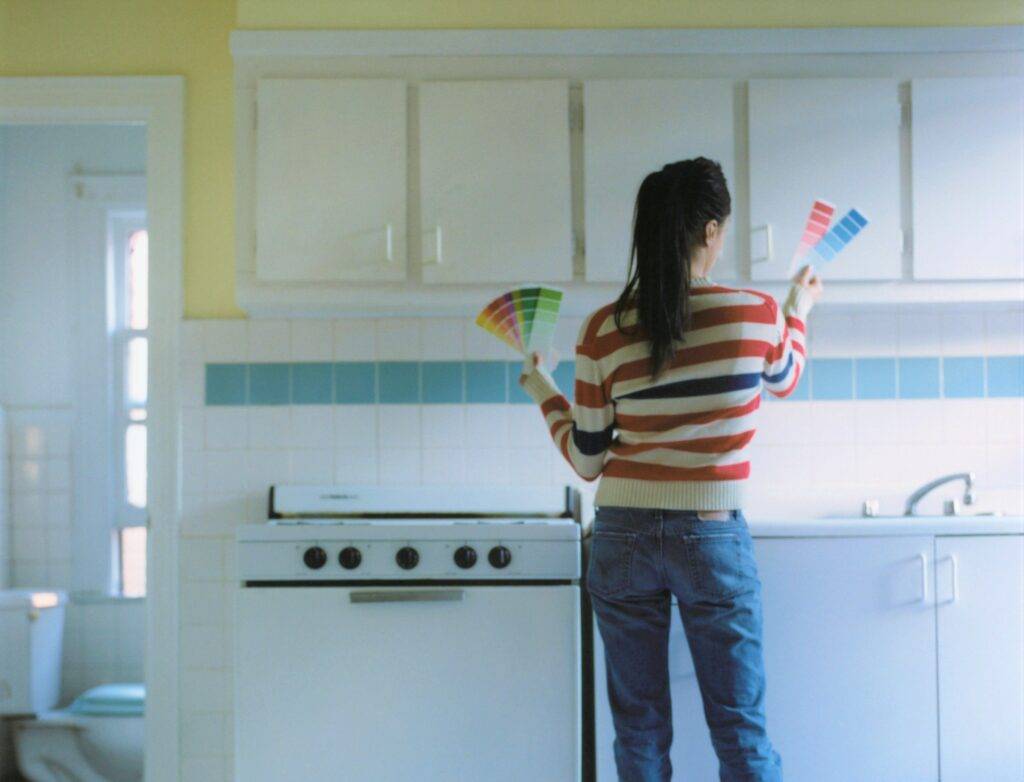Keeping your newly spray-painted kitchen cabinets looking fresh and flawless doesn’t require much effort—but a little regular care goes a long way. While the durable finish is designed to withstand everyday use, proper maintenance can help preserve the colour, shine, and smooth texture for years to come. Whether you’ve gone for a sleek matte look or a glossy finish, following a few simple cleaning and care tips will ensure your cabinets stay as stunning as the day they were refinished.
Sprayed kitchen cabinets can dramatically enhance the look and feel of your kitchen. They provide a smooth, professional finish that traditional painting methods often struggle to achieve. However, to keep that fresh, vibrant look for years to come, proper maintenance is essential. In this comprehensive guide, we will explore the steps and strategies for maintaining your sprayed kitchen cabinets, ensuring they remain a centerpiece of your kitchen for a long time.

Understanding Sprayed Kitchen Cabinets
Sprayed kitchen cabinets are created by applying paint or lacquer using a spray gun, which results in a fine, even coat. This method provides several benefits:
- Smooth Finish: Unlike brushes or rollers, spray guns can create a finish without brush marks or roller stipples.
- Consistent Coverage: Spraying allows for even distribution of paint, ensuring all areas are uniformly covered.
- Efficiency: Spraying can be faster than traditional methods, particularly for intricate or large surfaces.
Types of Sprayed Finishes
- Lacquer: Offers a durable, glossy finish that dries quickly and is resistant to moisture.
- Polyurethane: Known for its toughness and resistance to wear, making it ideal for high-traffic kitchens.
- Acrylic: Provides a non-yellowing finish, available in various sheens from matte to high gloss.
Initial Care: The First Few Days
The initial days after spraying are critical for the longevity of your cabinets. The paint needs time to cure fully, even if it feels dry to the touch. Here’s how to take care of your cabinets immediately after spraying:
Allow Adequate Curing Time
- Avoid Touching: Try not to touch or use the cabinets excessively during the first week.
- Ventilation: Ensure good ventilation to facilitate the curing process. Open windows or use fans to help air circulation.
Gentle Cleaning
- Dusting: Use a soft, dry cloth to remove dust. Avoid wet or abrasive cleaning agents.
- Handle Carefully: Avoid placing heavy items or leaning against the cabinets.
Regular Cleaning: Keeping the Shine
Regular cleaning is crucial to maintaining the appearance and integrity of your sprayed kitchen cabinets. Here’s a step-by-step guide on how to clean your cabinets effectively:
Daily Maintenance
- Wipe Spills Immediately: Use a soft, damp cloth to clean spills as soon as they occur. Avoid letting liquids sit on the surface.
- Avoid Harsh Chemicals: Use mild soap and water. Harsh chemicals can damage the finish.
Weekly Cleaning
- Dusting: Use a microfiber cloth to dust the cabinets. This prevents buildup of grime.
- Spot Cleaning: For tougher spots, use a mixture of warm water and mild dish soap. Apply with a soft cloth and wipe dry immediately.
Monthly Deep Cleaning
- Remove Grime: Mix equal parts vinegar and water for a natural cleaner. Apply with a cloth, gently scrub, and wipe dry.
- Inspect Hardware: Check hinges, handles, and other hardware. Tighten any loose screws and ensure everything is functioning correctly.
Protective Measures: Minimizing Wear and Tear
Preventative care can significantly extend the lifespan of your sprayed kitchen cabinets. Here are some protective measures to consider:
Use Cabinet Protectors
- Shelf Liners: Place liners inside cabinets to protect the surface from scratches and spills.
- Bumper Pads: Apply bumper pads to the inside of cabinet doors to prevent them from banging against the frame.
Avoid Excessive Moisture
- Control Humidity: Use a dehumidifier in your kitchen if necessary. High humidity can cause the paint to peel or bubble.
- Ventilation: Ensure your kitchen is well-ventilated, especially when cooking. Use the range hood to reduce steam and moisture.
Handle With Care
- Gentle Handling: Avoid slamming doors and drawers. Use handles and knobs rather than pulling directly on the painted surface.
- Avoid Hanging Heavy Items: Do not hang heavy bags or utensils on cabinet doors, as this can cause stress and damage to the paint.
Addressing Common Issues: Quick Fixes and Repairs
Even with meticulous care, issues may arise. Here’s how to address common problems to keep your cabinets looking their best:
Touching Up Scratches and Chips
- Matching Paint: Keep some of the original paint for touch-ups. Apply with a small brush to cover scratches or chips.
- Sanding: Lightly sand the area before applying touch-up paint to ensure it adheres well.
Dealing with Stains
- Baking Soda Paste: For stubborn stains, create a paste with baking soda and water. Apply gently with a cloth, then wipe clean.
- Magic Erasers: Use with caution. Test on a small, inconspicuous area first to ensure it doesn’t damage the finish.
Fixing Peeling Paint
- Remove Loose Paint: Gently scrape away any peeling paint with a plastic scraper.
- Sanding and Repainting: Sand the area smooth, then apply a primer followed by the matching paint.
Long-Term Care: Maintaining the Look
Over time, maintaining the look of your sprayed kitchen cabinets involves more than just cleaning. Consider these long-term care tips:
Reapply Topcoat
- Frequency: Depending on usage, consider reapplying a clear topcoat every few years to protect the paint and keep it looking fresh.
- Professional Help: For best results, hire a professional to reapply the topcoat.
Monitor and Adjust
- Hinges and Hardware: Regularly check and adjust hinges and hardware to ensure doors and drawers operate smoothly.
- Refinishing: After several years, you might consider refinishing the cabinets to restore their original look.
Professional Maintenance
- Annual Inspection: Have a professional inspect your cabinets annually to address any minor issues before they become major problems.
- Cleaning Services: Consider professional cleaning services periodically to deep clean and maintain the finish.
Conclusion
Maintaining your sprayed kitchen cabinets requires a combination of regular cleaning, preventative measures, and occasional repairs. By following these guidelines, you can ensure that your cabinets remain a beautiful and functional part of your kitchen for years to come. The investment in proper care and maintenance will pay off with a kitchen that continues to look fresh and inviting, enhancing the overall value and enjoyment of your home.

